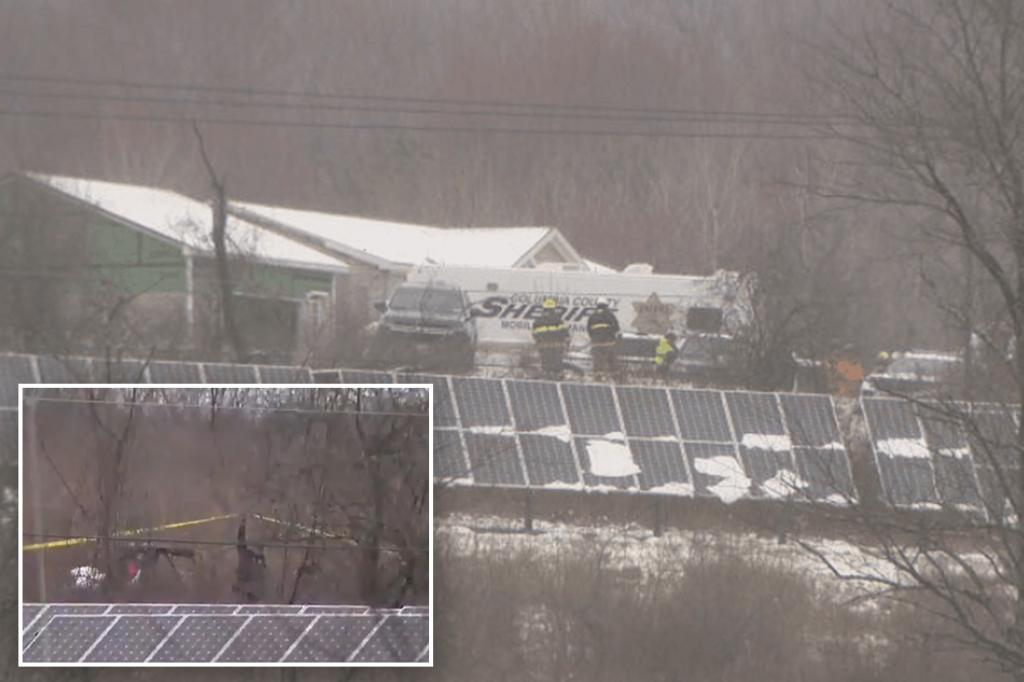Tragedy in the Skies: Small Plane Crash Claims Life in Upstate NY Field
A small aircraft crashed in a remote field near Rochester, New York, on Tuesday afternoon, killing at least one person aboard. The single-engine Piper PA-28 went down in a muddy agricultural area around 3:15 p.m. local time, sparking a multi-agency response. Federal investigators are now working to determine what caused the fatal accident that has left this rural community in mourning.
Emergency Response and Crash Scene Details
First responders arriving at the scene found the aircraft severely damaged, with debris scattered across a quarter-mile radius. Witnesses reported hearing sputtering engine noises before the plane descended rapidly. The Monroe County Sheriff’s Office confirmed the pilot was the sole occupant and did not survive the impact.
Key facts about the incident:
- Aircraft type: Piper PA-28 Cherokee (1967 model year)
- Departure point: Greater Rochester International Airport
- Intended destination: Unknown (flight plan not filed)
- Weather conditions: Light rain with 5-mile visibility at time of crash
Investigative Efforts Underway
The National Transportation Safety Board (NTSB) has dispatched a team to lead the investigation. Early examination suggests the plane may have experienced mechanical failure, though officials stress it’s too soon to draw conclusions. The aircraft’s maintenance records and pilot credentials are being thoroughly reviewed.
“We’re looking at all possible factors – weather, mechanical issues, pilot experience,” said NTSB investigator Mark Tolbert. “These investigations typically take 12-18 months to complete, but we’ll have preliminary findings within two weeks.”
Aviation safety experts note that small plane accidents account for nearly 90% of all U.S. aviation fatalities, according to FAA statistics. While commercial aviation remains extremely safe, general aviation faces higher risks due to:
- Less stringent maintenance requirements
- Variable pilot experience levels
- Exposure to more volatile weather conditions
Community Impact and Memorial Plans
The victim, identified as 54-year-old local businessman David Reynolds, was described by neighbors as an experienced pilot who frequently flew for both business and pleasure. A makeshift memorial has sprung up near the crash site, with flowers and notes left by community members.
“Dave was the kind of guy who’d give you the shirt off his back,” said longtime friend Michael Chen. “He’d been flying for 20 years without incident. This just shows how quickly things can change in aviation.”
The local chapter of the Aircraft Owners and Pilots Association (AOPA) has announced plans for a memorial flight in Reynolds’ honor once the investigation concludes. Meanwhile, counseling services have been made available to first responders who dealt with the traumatic scene.
Safety Concerns in General Aviation
This crash marks the 23rd fatal small plane accident in New York since 2018, according to NTSB data. While the overall accident rate has declined by nearly 40% over the past two decades, safety advocates argue more can be done to protect general aviation pilots and passengers.
Key safety statistics:
- General aviation averages about 1,200 accidents annually
- Mechanical failures cause approximately 20% of small plane crashes
- Pilot error remains the leading factor in 75% of accidents
Aviation safety consultant Dr. Ellen Pritchard emphasizes the importance of pre-flight checks: “Many accidents could be prevented through more rigorous maintenance and pilot training. Technology like terrain awareness systems has helped, but human factors remain critical.”
What Comes Next in the Investigation
Investigators will focus on several key areas in the coming weeks:
- Examination of the wreckage and engine components
- Analysis of any available radar data
- Review of the pilot’s medical records and flight history
- Assessment of weather conditions and possible microbursts
The NTSB will issue preliminary findings within 10-14 days, though the full investigation will take significantly longer. Meanwhile, the FAA has issued a notice to pilots in the region reminding them of safety protocols for flying in variable spring weather conditions.
A Community Mourns and Looks Ahead
As the investigation continues, local residents are coming to terms with the sudden loss. The crash site remains secured as evidence collection continues, with plans to remove the wreckage in the coming days. Memorial services for Reynolds are scheduled for Saturday at the Rochester Aerodrome, where he first learned to fly.
This tragic event serves as a sobering reminder of aviation’s inherent risks, even for experienced pilots. Those wishing to support the family can contribute to a scholarship fund being established in Reynolds’ name for aspiring aviators. The aviation community hopes this loss will lead to renewed focus on small aircraft safety measures that could prevent future tragedies.
See more CNN Headline


